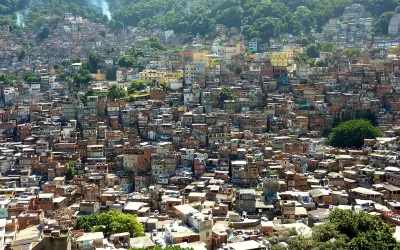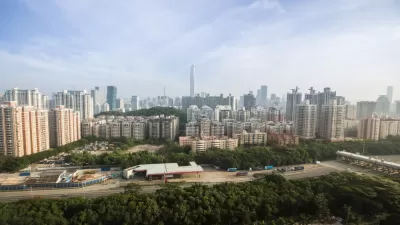The measures of urbanization vary widely, and the differences pose a challenge in developing policies and plans for cities.

Richard Florida considers the various ways in which levels of urbanism have been defined and measured. United Nations estimates say 55 percent of the global population is urban. But a new report from the European Commission puts this figure at 84 percent. The report also found higher urban levels in Asia and Africa.
The differences stem from the variety of ways urbanization is reported country by country, says Florida:
According to the EC group, about half of countries define urban based on a minimum population size threshold—85 percent of countries use a threshold of 5,000 people or fewer but other countries have dramatically higher requirements, like Mali’s 30,000, Japan’s 50,000, or China’s 100,000. Only a few countries use population density as a measure of urbanization.
However, researchers from New York University say the European Commission figures are too high and the 55 percent figure is more accurate. "[Shlomo] Angel believes the most effective way to gauge urbanization is not through population or density per se, but by looking at contiguous built-up areas of 100,000 or more people," reports Florida.
Florida argues that better, more consistent standards and analysis are essential for developing effective policy. "The research, data, and urban science we have on the world’s cities and urban areas is troublingly inadequate. If building better, more resilient, more sustainable, and more prosperous cities is key to our future global well-being, it is critical that we do much better."
FULL STORY: Just How Much of the World Is Urban?

Trump Administration Could Effectively End Housing Voucher Program
Federal officials are eyeing major cuts to the Section 8 program that helps millions of low-income households pay rent.

Planetizen Federal Action Tracker
A weekly monitor of how Trump’s orders and actions are impacting planners and planning in America.

Ken Jennings Launches Transit Web Series
The Jeopardy champ wants you to ride public transit.

‘Minnesota Nice’ Isn’t so Nice When You Can’t Find a Place to Live
The Economic Development and Housing Challenge Program can help address the scourge of homelessness among Indigenous people.

NYC Open Streets Organizers Call for City Support
The number of open streets projects has dropped year after year as volunteer groups struggle to fund and staff them.

Crime Continues to Drop on Philly, San Francisco Transit Systems
SEPTA and BART both saw significant declines in violent crime in the first quarter of 2025.
Urban Design for Planners 1: Software Tools
This six-course series explores essential urban design concepts using open source software and equips planners with the tools they need to participate fully in the urban design process.
Planning for Universal Design
Learn the tools for implementing Universal Design in planning regulations.
Heyer Gruel & Associates PA
Ada County Highway District
Institute for Housing and Urban Development Studies (IHS)
City of Grandview
Harvard GSD Executive Education
Toledo-Lucas County Plan Commissions
Salt Lake City
NYU Wagner Graduate School of Public Service





























